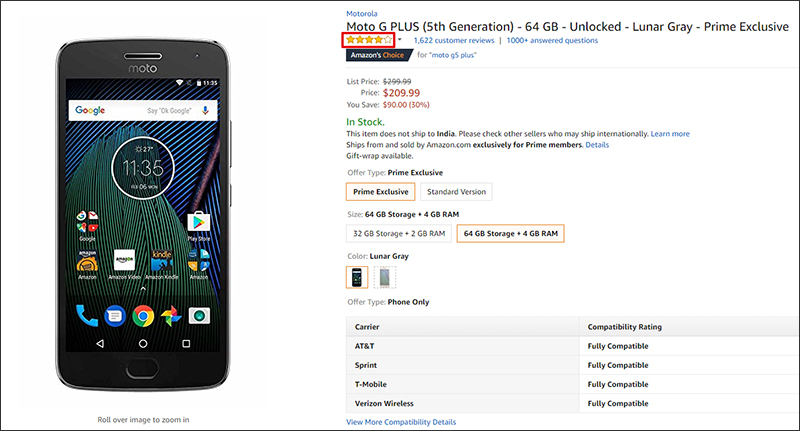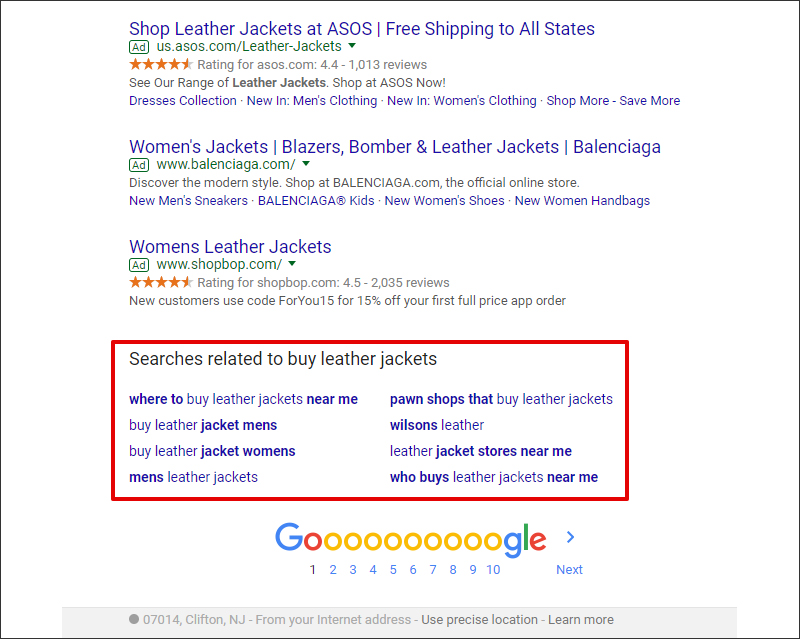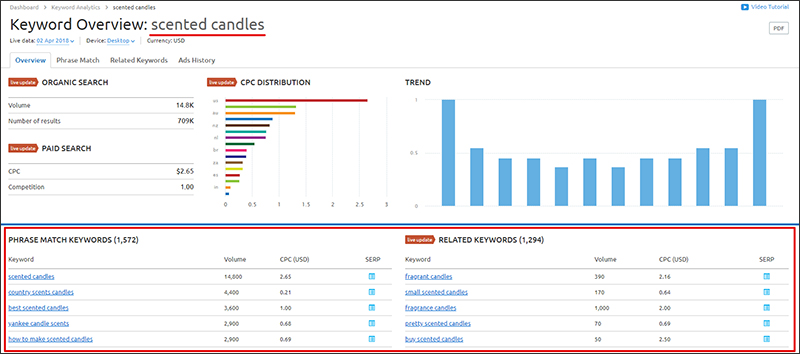
When we’re talking about Search Engine Optimization, there are tons of factors that matter. But today, we are talking about a specific set of issues and a very specific niche called eCommerce.
Now, let’s consider these tips for developing eCommerce sites, as Amazon or Walmart has a strong domain authority developed over the past years, so they don’t have to put too much efforts to rank on the first few results. But we shouldn’t forget that Amazon or Walmart came to this point after a lot of years!
So, let’s have a look at these 5 SEO issues that you need to solve in 2018 to get your rankings high on Google and other search engines.
1. Incomplete Product Description
There are two reasons why you need a strong product description for every item. First, to let Google know what this particular page is all about. Second, and more important than the first, to let your customers know what this product is all about.
According to a Backlinko Research, higher ranking pages have longer content, and the average is 1890 words from the 1 million searches.
It’s simple, the more you write, the more information Google can scroll through. The more in-depth content you write, higher the chances of ranking better in search engines
On a common point of view, the visitors will have every detail regarding the product when they visit your page. Hence, they can make an informed decision. Amazon puts tons of informative content on their pages, so buyers can make a wise choice. They have even come up with Enhanced Branded Content (EBH) and A+ Content that shows relevant information with high-quality graphics.
This is one of the biggest issues in eCommerce SEO, and solving this can give a lot of benefits.
2. User Review is a Big Must!
More than 88% of the online shoppers consider user reviews in their purchase decisions. So, we have to take it seriously. Apart from giving honest opinions about the product to customers, reviews also generate relevant content for the page.
There’s this great thing about Amazon, even if the product has tons of positive reviews, they also highlight the negative experiences from the customers. For example, here’s the page of “Moto G Plus” on Amazon, and it has an average of four out of five user ratings.
 But, you’ll also find negative feedbacks from the customers when you scroll down a bit, so the potential buyers can decide by looking at both perspectives of the product.
But, you’ll also find negative feedbacks from the customers when you scroll down a bit, so the potential buyers can decide by looking at both perspectives of the product.
 Regardless of the review being positive or negative, the review is about that particular product, so it is going to help you in SEO eventually.
Regardless of the review being positive or negative, the review is about that particular product, so it is going to help you in SEO eventually.
Putting user reviews is the first step to solve this SEO issues for eCommerce. And if you do that, good results are on the way.
3. Poor Keyword Optimization
When it comes to keyword selection, you have to be choosy. Let’s understand this with an example.
Here, I have taken an example of a web development company based in let’s say… Charlotte.
 The difficulty for keywords “web development company” and “web development agency” are almost same. But the volume and number of results have a different scene. For “web development agency” the volume is 880, and the number of results are over 25,000. But for “web development company” volume is more than thrice and the number of results are almost half.
The difficulty for keywords “web development company” and “web development agency” are almost same. But the volume and number of results have a different scene. For “web development agency” the volume is 880, and the number of results are over 25,000. But for “web development company” volume is more than thrice and the number of results are almost half.
For a new company, such research is utmost important. It would be really demotivating for your business if you try to rank on high volume, high competition keywords. On the other hand, if you just pick the right keywords, it can lift up your chances to rank higher on Google.
For an eCommerce business, it’s good to avoid generic keywords (unless you’re Amazon!) and focus on sub-category keywords. For example, choose “buy sneakers for men” over “buy shoes for men”.
A thorough keyword research is the move to solve this huge SEO issue for eCommerce. Make this move!
4. Content Without Less Transactional Keywords
When it comes to content, you have a certain set of keywords in mind, and that’s how you design your entire piece of content. That’s completely fine. But, there are some keywords that can benefit you a lot if you add them a few times in your content.
I’m talking about the keywords that people are searching but you’re missing out. Now, these keywords may not come up with a high volume, but it can drive traffic to your site because:
- A very few people have optimized those keywords, so it would be easier to rank on them.
- It adds value to your content and eventually you make the content that is thorough. That helps you rank higher on your main keywords.
For example:
If you simply search “Buy Leather Jackets”, Google will give you a few suggestions at the bottom of a page. Have a look:
 Or you can simply search on the Google bar, and it suggests you some of the popular searches:
Or you can simply search on the Google bar, and it suggests you some of the popular searches:
 You can simply add those keywords into your content, and it will help searchers find answers into content. What does that tell you? Higher rankings!
You can simply add those keywords into your content, and it will help searchers find answers into content. What does that tell you? Higher rankings!
There’s another good way to find the relevant keywords through SEMrush – an online tool to analyze your keywords. Simply search for your main targeted keyword, it will show suggested keywords with the volume:

Adding these transactional keywords in the content is the step towards solving this issue, and it can boost SEO for your eCommerce site.
5. Poor Selection of eCommerce Platform
At an early stage, many eCommerce websites choose a platform that can save initial cost, but that can hurt in a long run. Here are some possible reasons why eCommerce stores migrate between platforms. Take a note that platform migration may hurt your search engine rankings at initial level:
- High maintenance cost
- Slow site performance
- Bad customer experience
- Longer development time
- Lack of design innovation
- CRO issues
- UX/UI
There some benefits of migrating eCommerce platforms, but at an initial stage, it can hurt your SEO. The best thing to do is know your requirements, and choose the best platform accordingly. There are pretty good eCommerce platforms available like Shopify, BigCommerce, 3DCart, WooCommerce, etc. Every platform has its own advantages and disadvantages, so you should start with a deep study of these platforms.
Choosing the right platform has a lot to do with your eCommerce SEO, so make a thorough research on each of these platforms, and pick the right eCommerce platform.
Bottomline:
I hope these points are useful to your platform, and you’ll optimize them in the nearest future. Let us know if you find other SEO issues for eCommerce that are hurting your website, we would love to discuss them with you.
Cheers!

Leave a Reply
You must be logged in to post a comment.